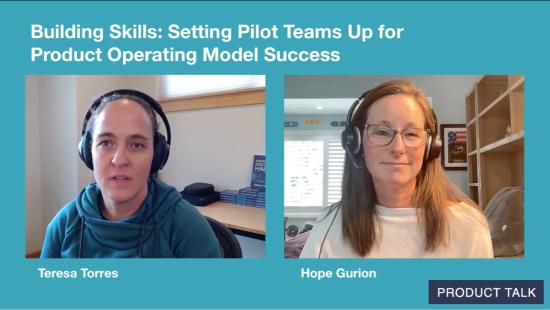Our Guide to the Summer 2025 Issue
Create Mental Space to Be a Wiser Leader Megan Reitz and John Higgins Key Insight: The pressure to do more, faster, can impede insight and decision-making. Embracing a more expansive form of attention can help change that. Top Takeaways: The fast pace of business can make leaders almost exclusively task-focused as they narrow their attention […]


Create Mental Space to Be a Wiser Leader
Megan Reitz and John Higgins
Key Insight: The pressure to do more, faster, can impede insight and decision-making. Embracing a more expansive form of attention can help change that.
Top Takeaways: The fast pace of business can make leaders almost exclusively task-focused as they narrow their attention on managing day-to-day challenges. In the process, they may trap themselves and others in “doing mode,” where quick action overshadows thoughtful reflection — with hefty consequences like poor decisions, burnout, and stifled innovation. When leaders remember that safety, people, attention, conflict, and the environment are factors within their control, they can enter the “spacious mode,” a different way of paying attention that enables better collaboration and wiser choices.
Take CEO Succession Planning Off the Back Burner
J. Yo-Jud Cheng and Paul Healy
Key Insight: Most boards avoid preparing for the CEO’s eventual departure, but they can take steps to normalize discussions on the topic.
Top Takeaways: The CEO role is high-stress with a high turnover rate, research shows, so maintaining a solid CEO succession plan is an important piece of corporate governance. But it’s a responsibility that many boards neglect to attend to proactively for a variety of reasons, such as concern for their relationship with the current CEO, a lack of urgency because the CEO is relatively new, or complacency. Four key lessons can help boards normalize these discussions so they’re better prepared for a CEO transition.
How Companies Profit From an International C-Suite
Niccolò Pisani and Ivy Buche
Key Insight: Businesses that have more international C-suite executives than industry peers consistently outperform competitors.
Top Takeaways: A study of global Fortune Global 500 companies with foreign-born executives on their top leadership teams found that such businesses have better business operations and higher profits compared with their sector peers. Interviews with executives at companies with an above-average ratio of international leaders in the C-suite reveal that non-native leaders can add value by bringing a global perspective to the business, securing vital stakeholder relationships, extending the company’s positive societal impact, and accelerating knowledge-sharing across borders.
Time Well Spent: A New Way to Value Time Could Change Your Life
Leslie Perlow and Salvatore Affinito
Key Insight: A new tool for calculating the subjective value of time can help people identify and prioritize activities that yield greater life satisfaction.
Top Takeaways: Research has found that the more value people find in activities outside of work, the more they find value in doing their jobs. A new metric — the subjective value of time — seeks to capture the degree to which an individual derives the joy, achievement, and meaningfulness they need to feel satisfied with their lives. A tool for assessing weekly activities can open up insights that leaders and teams can use to spend more of their time on the things that contribute to well-being and life satisfaction.
Will AI Disrupt Your Business? Key Questions to Ask
Julian Birkinshaw
Key Insight: AI won’t affect every company the same way. Leaders can use a diagnostic framework to assess how it will affect theirs.
Top Takeaways: While new technology creates both threats and opportunities for businesses, most incumbents will find AI to be a sustaining rather than disruptive force. But emerging technologies’ demand-side and supply-side effects have different impacts for companies with virtual offerings versus physical products, and they introduce different types of risks and opportunities. Leaders can use a structured framework that offers practical diagnostic questions to assess the specific impact AI and other emerging technologies will have on their business.
The Business Cost of the Shrinking STEM Research Pipeline
Chris Carr and Dave Christy
Key Insight: The talent pipeline of international doctoral talent is at risk in the U.S. It’s in companies’ best interest to be part of the solution.
Top Takeaways: International doctoral talent has historically powered university research as well as science and technology innovation in the U.S. But with global competition for top researchers intensifying as federal support and funding for doctoral research programs are being withdrawn, the country’s competitive edge in STEM research is under threat. Companies need to understand how recent policy changes and demographic shifts are affecting businesses and take strategic steps to protect their access to STEM talent.
People Follow Structure: How Less Hierarchy Changes the Workforce
Markus Reitzig and Kathrin Heiss
Key Insight: When companies flatten their corporate structure, the proportion of employees who thrive on autonomy tends to increase.
Top Takeaways: To what extent do changes in organizational structure influence employee decisions to join — or stay at — a company? Researchers found that when companies de-layer their hierarchies, their workforces change: Typically, these businesses see the share of conscientious, open, and agreeable employees rise, largely due to turnover among employees who feel disadvantaged by the change. The effect at different organizations can vary, however, based on how managers communicate the goal of flattening the structure and how they attend to high-potential employees.
Rethink the Growth Imperative
Andrew J. Hoffman
Key Insight: The widespread prioritization of business growth is a contributing factor in accelerating global environmental degradation.
Top Takeaways: The belief that economies and businesses must continually grow or risk irrelevance persists in business schools and boardrooms, but professor and author Andrew J. Hoffman points out the ways in which perpetual economic growth is neither possible nor environmentally sustainable. In this excerpt from his book Business School and the Noble Purpose of the Market: Correcting the Systemic Failures of Shareholder Capitalism, he explains why businesses must begin to explore different approaches to growth.
Use Design Choices to Prevent Imitation
Samuel C. MacAulay and Dmitry Sharapov
Key Insight: Design-based strategies can help companies protect their intellectual property from would-be copycats.
Top Takeaways: Businesses can protect their innovations from rivals who want to take shortcuts, by applying strategic choices to their product and process designs. By strategically adding or removing knowledge components, companies can deploy four design plays — careful coordination, tagging/cloaking, feinting/spiking, and ground staking — to frustrate potential imitators. This cross-functional approach offers companies a powerful complement to traditional methods for protecting intellectual property.
How Neuroinclusion Builds Organizational Capabilities
Robert D. Austin, Neil Barnett, Chloe R. Cameron, Hiren Shukla, Thorkil Sonne, and Jose Velasco
Key Insight: Research on long-term neuroinclusion efforts at large employers offers proof that neurodivergent employees can deliver big business benefits.
Top Takeaways: Leaders should consider neuroinclusion as a strategic capability-building opportunity rather than a diversity initiative. Data from 10-plus years of neuroinclusion initiatives at major companies shows that such programs have yielded significant business value beyond just filling open positions. Employers have gained the competitive advantages that come from embracing neurodistinct people, whose skill sets and ability to think differently have been enhancing companies’ business capabilities for years.



















































































































































